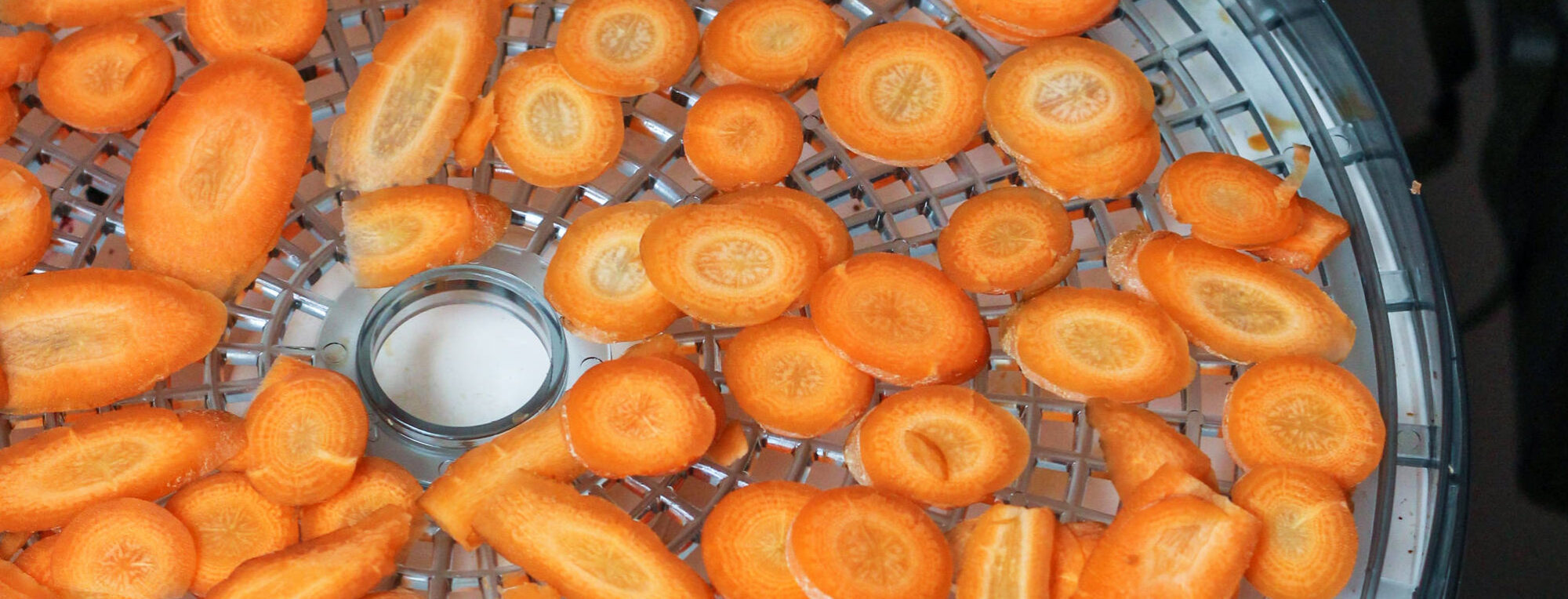DIFFERENT TEMPERATURES
FREEZER
Fatty foods and meat for one to two years.
REFRIGERATOR
Storage of fatty foods and meat for at least one month.
PANTRY/ROOM TEMPERATURE
All foods except fatty foods and meat.
ON A HIKE
Store the food in the middle of the rucksack, insulated from the sun’s heat.
Storing food properly will help maintain a long shelflife its quality and extend its shelf life. By following these guidelines, you can keep your dried food for along time.
Different ways to store dried food
Plastic bags are cheap but not recommended for more extended storage; the same goes for plastic jars. A paper bag is an alternative; if you are unsure whether food is dry enough, keep it in a plastic box to create a moisture-free atmosphere.

The BOOK has more information how to store food properly
STEPS TO FOLLOW WHEN STORING FOOD — FOR LONG SHELF-LIFE
1. Cool it down
Allow the dehydrated food to cool completely after the dehydration process. This helps prevent condensation inside the storage containers, which can lead to moisture and spoilage.
2. Use airtight containers
Transfer the dehydrated food into airtight containers such as glass jars, metal cans, or food-grade plastic containers with tight-fitting lids. Make sure there are no cracks or holes in the containers that would allow air or pests to enter.
3. Remove excess air
To further protect the dehydrated food, you can use vacuum-sealed containers or vacuum-sealed bags to remove excess air. This helps prevent oxidation and moisture buildup.
4. Label and date
Clearly label each container with the contents and the date of dehydration. This will help you keep track of the shelf life and rotation of your stored food.
5. Store in a cool, dark place
Store your dehydrated food in a cool, dark, and dry place. Exposure to light, heat, and humidity can degrade the quality and shorten the shelf life of the food. Ideally, aim for a storage temperature below 70°F (21°C).
6. Avoid temperature fluctuations
Fluctuating temperatures can cause moisture to develop within the containers, leading to spoilage. Keep your dehydrated food away from areas with temperature changes, such as near windows, ovens, or stoves.
7. Rotate your stock
To ensure freshness, periodically rotate and use your stored dehydrated food. Follow a first-in, first-out (FIFO) system, using the oldest items first and replenishing your supply.
Mylar bags
This type of bag has a combination of plastic and aluminum layers. This makes it airtight, even during long-term storage. Fill the bags with food and one or several oxygen absorbers and seal them with a vacuum machine or a hair straightener. The bag will shrink overnight due to a chemical process.



Vacuum bags
When you vacuum seal the food, you remove most of the air and thus the oxygen. The sealing is also completely waterproof, and the food becomes compact. Due to the lack of oxygen, the rancidity process slows down dramatically in fatty foods such as meat, certain fish and cheese.
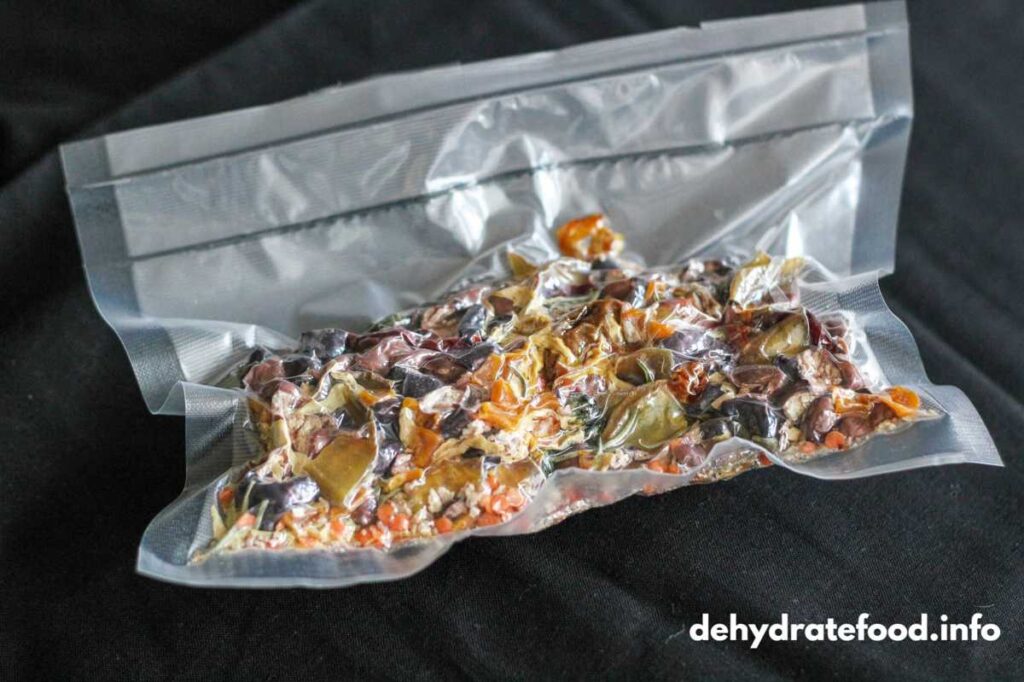
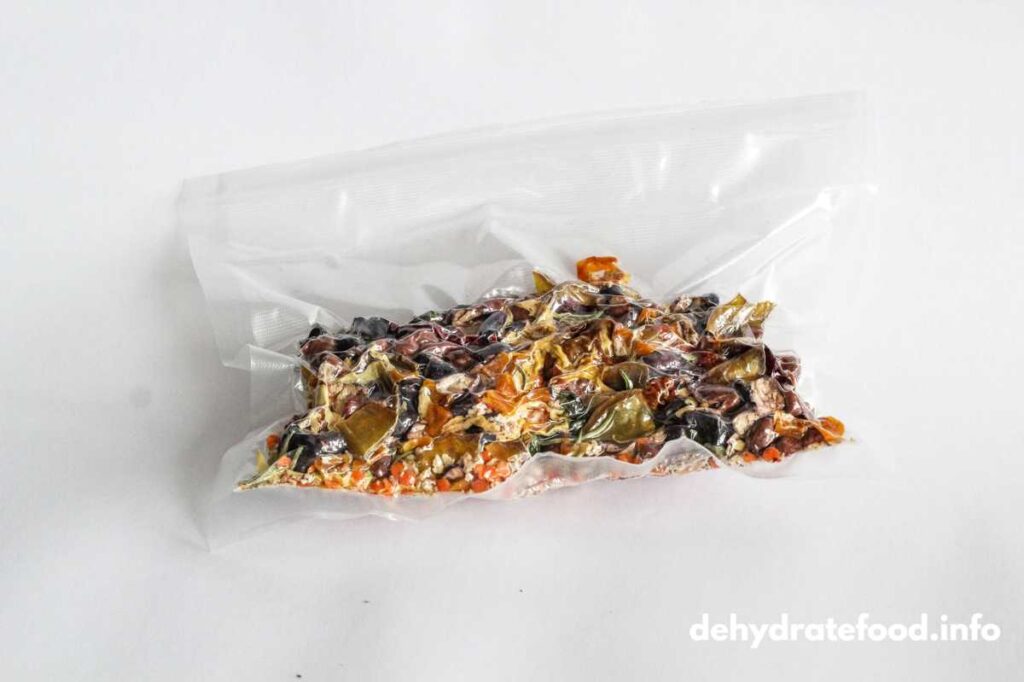
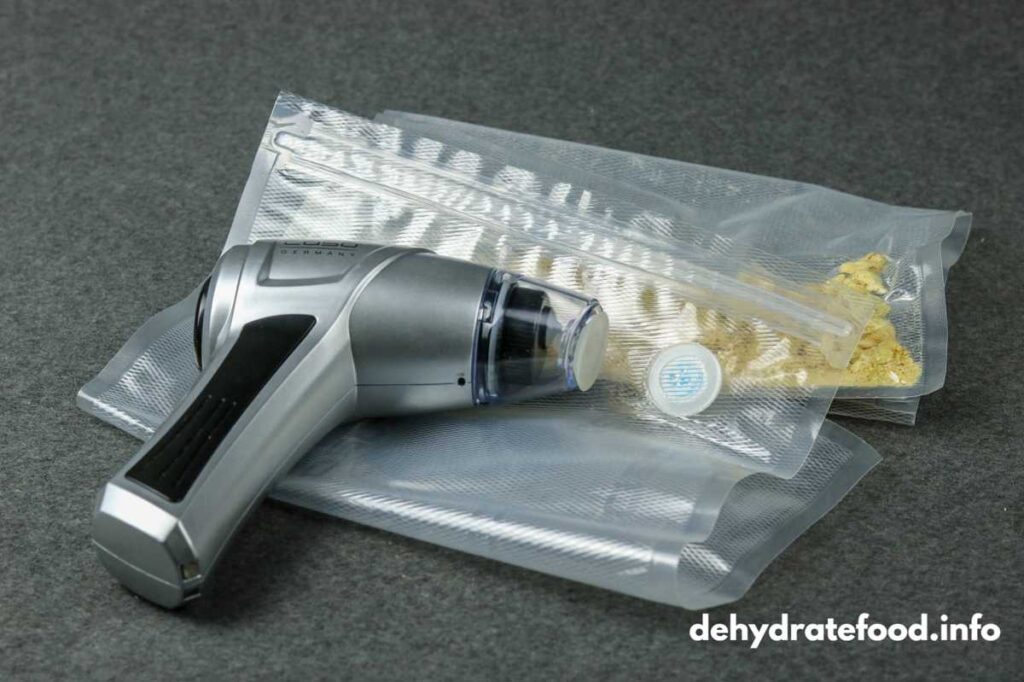

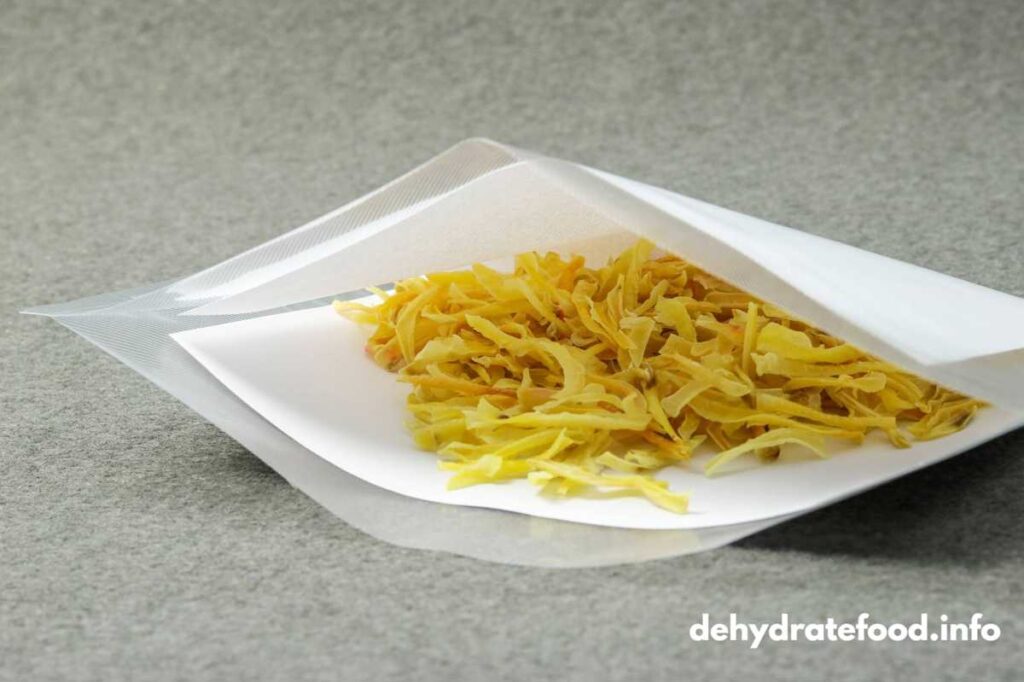
Glass jars
Glass is perfect for long-term storage because it is completely airtight. It also does not react with any foods.

